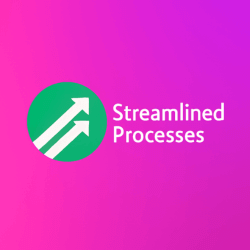For Marketing Automation Customization, see our main page here.
What Is Marketing Automation Customization?
Marketing Automation Customization refers to the process of tailoring marketing automation tools to meet your specific business goals, audience needs, and customer journeys. It goes beyond generic automation by aligning workflows, messaging, and timing with your unique brand strategy and customer touchpoints.
While automation simplifies repetitive tasks, customization brings meaning and effectiveness to those tasks. As a result, companies gain more control over personalized messaging, lead nurturing, segmentation, and data collection.
For example, a SaaS company may customize onboarding emails to align with different user roles, while a retail brand can automate seasonal promotions based on shopper behavior. In both cases, customization boosts engagement and ROI.
Why Customization Is Vital to Successful Automation
All businesses are different, and so are their customers. Therefore, using out-of-the-box automation templates rarely drives great results. Most importantly, they can feel impersonal, leading to lower engagement rates and poor conversion.
Marketing Automation Customization lets you:
- Segment audiences more effectively
- Deliver relevant messages at optimal times
- Create dynamic workflows based on real-time data
- Automate touchpoints that mirror your sales funnel
In short, it’s not just automation—it’s intelligent automation built around your brand’s DNA.
The Core Building Blocks of Marketing Automation Customization
Customization starts with a clear structure and smart segmentation. Businesses often succeed when they:
- Define their buyer personas
- Track behavioral triggers
- Choose tools that allow flexible conditions and filters
- Test and optimize different touchpoints over time
For example, a B2B software company can send tailored case studies based on a lead’s industry type. Similarly, a university can reach out to prospective students with location-based scholarship information. Both leverage customization for greater impact.
Choosing the Right Tools for Customization
Not all marketing platforms offer robust customization features. Therefore, it’s important to compare tools based on interface flexibility, trigger complexity, and integration options.
Some popular tools that support in-depth customization include:
- ActiveCampaign – known for complex conditional flows
- HubSpot – integrates CRM data for personalized automation
- Marketo – powerful for B2B segmentation and nurturing
- Klaviyo – purpose-built for ecommerce behavioral campaigns
However, your business size and workflow complexity will help determine the best fit. Startups might need agility, while enterprises may prioritize full CRM integration.
Examples of Marketing Automation Customization in Action
To clarify how Marketing Automation Customization works in real life, consider these use cases:
- Healthcare provider: Sends automatic reminders and content based on appointment type and patient history.
- Online course platform: Customizes onboarding based on course category and student goal (e.g., certification vs personal growth).
- Real estate agency: Delivers listings tailored to where a lead lives and what type of property they are browsing.
In each scenario, customized automation helps build trust, shorten conversion cycles, and increase satisfaction.
Benefits Beyond Efficiency
Marketing Automation Customization doesn’t just save time—it drives results. By speaking directly to the individual needs and actions of your audience, it helps to:
- Improve open and click-through rates
- Boost qualified lead generation
- Reduce marketing waste
- Increase customer lifetime value
Above all, it supports a more human approach to digital marketing, even when scaled across thousands of users.
Common Mistakes to Avoid
Despite its potential, customization can go wrong. Companies often fall into these traps:
- Overpersonalizing without consent, which can feel invasive
- Failing to update workflows as data evolves
- Using too many triggers, causing cross-messaging
- Relying on automation without reviewing analytics
Consequently, it’s best to start simple, test consistently, and always consider the customer’s perspective.
How AI and Data Shape Customization Today
The rise of machine learning has added precision to how we build automation. AI-powered tools now leverage customer behavior, content interaction, and predictive analytics to craft informed decisions at scale.
For example, AI can auto-adjust email send times based on past open rates or suggest product recommendations based on similar users. As a result, marketers gain both speed and relevance.
This article was created with the assistance of AI tools and reviewed by our team at Streamlined Processes LLC to ensure accuracy and relevance.
FAQ: Understanding Marketing Automation Customization
Can small businesses benefit from Marketing Automation Customization?
Yes, and in fact, they often have the most to gain. Custom workflows can keep costs down while delivering a personal experience. For example, local shops use segmentation for loyalty rewards and time-based discounts.
How often should my workflows be updated?
Review them at least quarterly. However, whenever you launch a new product or collect new data, update your automation accordingly to stay relevant.
What kind of data supports better customization?
Behavioral data (clicks, page views, time spent), CRM entries (job title, location), and transaction history are especially useful. More specifically, combining multiple data types leads to richer segmentation.
Trends Shaping the Future of Automation Customization
Marketing Automation Customization is continuing to evolve, especially with advances in data privacy and personalization tools.
Some trends to watch include:
- Zero-party data: Customization based on data directly shared by users—more transparent and accurate.
- Omnichannel automation: Syncing messages across email, SMS, and social for consistent experience.
- Conversational AI: Using chatbot responses to branch customers into personalized paths.
Meanwhile, as consumer expectations rise, companies that fail to personalize risk falling behind.
Final Thoughts on Marketing Automation Customization
To sum up, Marketing Automation Customization bridges the gap between automation efficiency and customer relevance. By designing workflows that reflect real customer behavior and needs, businesses can unlock higher engagement and sustained growth.
It’s not about sending more emails—it’s about sending the right messages, to the right people, at the right time.
Follow us on Facebook here.

